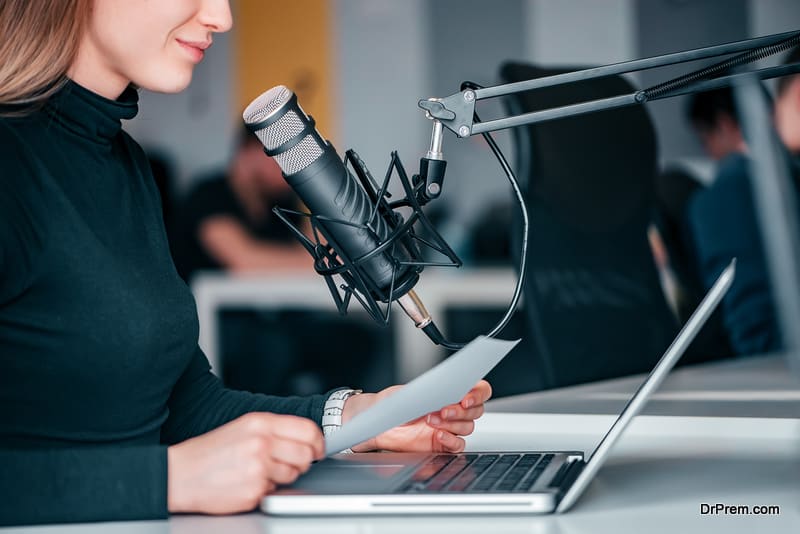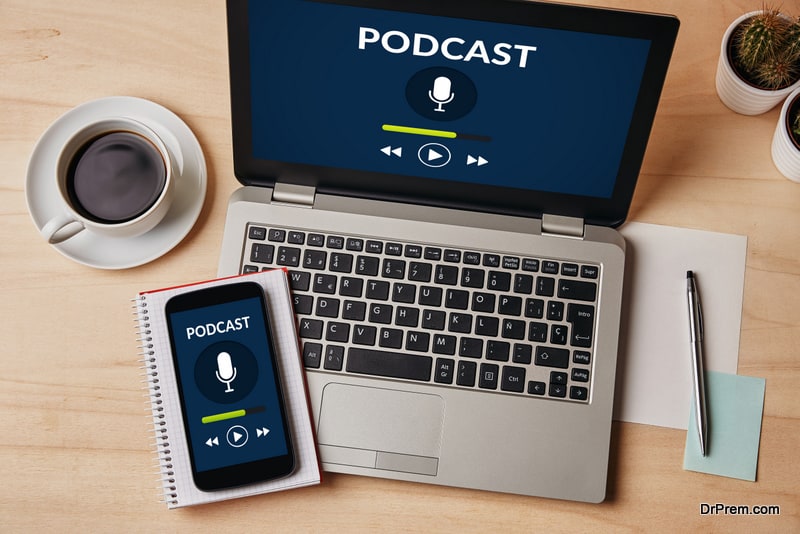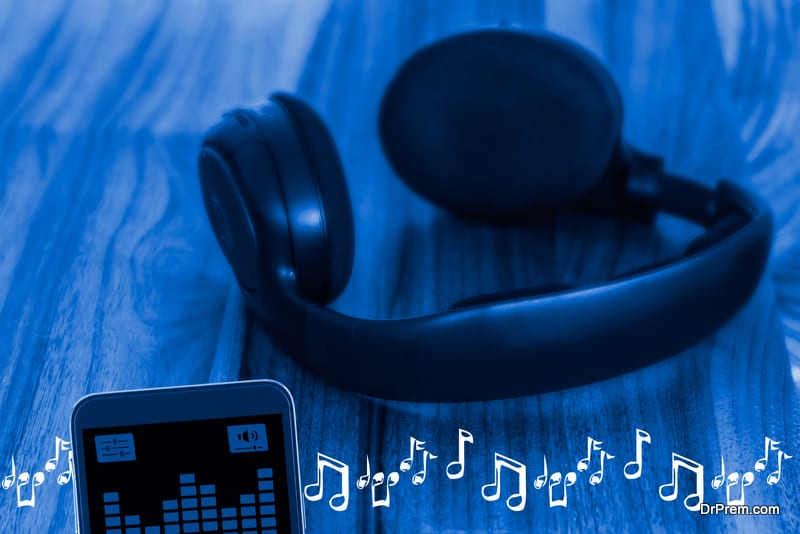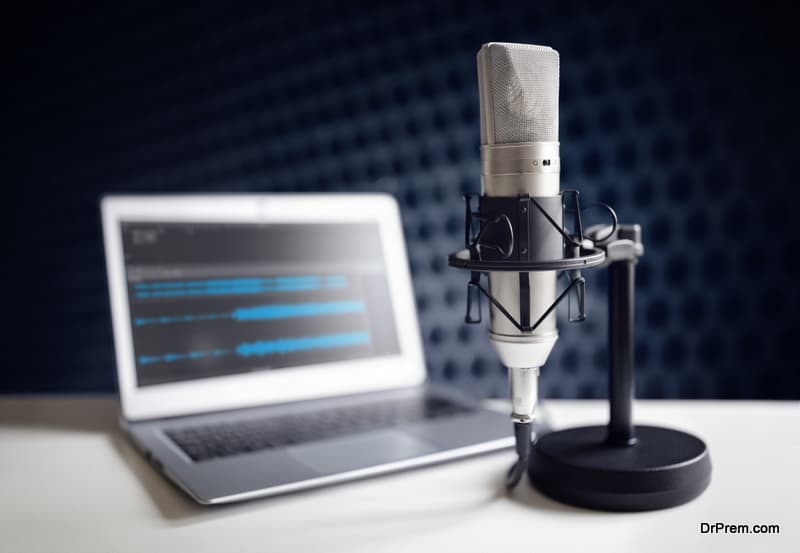The number of podcast listeners continues to grow every year. Study results indicate that Americans listen to podcasts every week, up 175% from five years ago. That’s about 90 million people every month.
If you own a business, you should consider learning how to start a podcast. It’s possible to grow your business and audience through content marketing.
Making a podcast does not require a lot of technical knowledge nor a lot of money. Discover how to start your podcast for under $100 in this guide.
Why Start a Podcast
Creating content for your brand and business is valuable, and podcasting is no different.
Podcasting offers a new audience the opportunity to consume your long-form content.
It isn’t necessary to have a blog to become a successful podcaster. However, building an audience from scratch with a podcast is a terrific way to establish yourself as a leader in your field.
A podcast can also be a powerful tool for driving traffic back to your website or store. Podcast directories provide links back to your website. You can direct listeners to it at the end of each episode.
Hundreds of Apple Podcasts categories and subcategories attract listeners who actively seek out new content. As a result, a highly targeted audience can hear your podcast. In addition, people interested in the topic can find your podcast.
A podcast will allow you to establish yourself as an authority on your topic. You become a credible source, which helps you build your audience and sell your products. Customers will be inclined to buy your products if they see you as an authority.
Why Podcasts Work as a Platform

It’s easy to consume podcasts, which makes them popular content platforms. There are many ways to listen to podcasts, including driving in the car, working out, or even travelling.
Podcasts can be listened to on any device, which is why they are easy to consume. Listeners don’t need any equipment like a radio to listen. They can listen on any device like smartphones or computers. With podcasts, your audience can listen at their own pace, unlike radio.
With podcasts, you can connect with your audience with more personally than with other content platforms.
Think about spending 30 minutes in your target market’s ears. It is as if you are speaking to them directly.
It’s a chance to establish a more personal connection with your audience. People are even more attentive to the ads because of this level of engagement.
61% of listeners buy products or services after hearing them advertised on a podcast, whether you’re promoting your business or monetizing with ads.
The best part is, you can make and listen to them for free.
What You Need to Start a Podcast
To start creating a podcast. You need at least three things.
1. Computer
Firstly, you must have a computer. Recording and uploading podcasts require a computer. It does not have to be high-end. Budget or midrange laptops are fine.
2. Software
The software comes next. It allows you to record audio from your microphone and save it to your computer. You can also edit, clean, and upload your recordings. Podcast software is available in two forms: paid and free.
· Paid
If you want all the best features of podcast editing, you should invest in software. It may go beyond what you need for editing a podcast, but if your mixer and equipment are high-end, you should consider it.
Adobe Audition is a great paid software. A subscription to Audition alone costs $20.99 per month annually or $31.49 per month.
· Free
There are a lot of great alternatives to paid, premium audio editing software. Audacity is one of the best free software available. There are many tutorials online for learning how to use it, so it’s easy to use.
If you’re using Apple, GarageBand is an excellent alternative to Audacity. You can use it to edit audio without too much trouble. For example, in GarageBand, you can record your podcast audio and save it as an MP3. If needed, you can use a secured MP3 to MP4 converter.
3. Microphone

Desktop and laptop computers are virtually all equipped with USB ports, allowing you to connect a device, such as an external microphone.
They have a plug-and-play design, so no additional drivers or installations are needed. Fortunately, you can get a decent USB microphone for under $50.
For a better sound quality for your podcast, you might consider an expensive podcast microphone plugged into a mixer.
You can still achieve good audio quality with a USB microphone, however. The majority of popular podcasts today still use USB microphones and have a straightforward setup.
If your laptop or computer has a microphone built-in, do not use that to record your podcast.
It is going to sound awful. Those built-in microphone designs are not for podcasting. If you’re serious about starting a podcast, you’ll need a decent external microphone.
4. Music
Your show’s intro and outro should feature music that matches the show’s personality. Nevertheless, do not use copyright-protected music without permission. Apple and Spotify can ban you for this severe violation.
You can get a lot of free-to-use music online called creative commons online. A simple search will give you thousands of results.
A warning, if you use royalty-free music online, there might be a chance that some other podcasts or content creators are using it.
5. Cover Art

The cover art is what listeners will see first. It should visually communicate the topic of your podcast. Don’t forget to include your logo. Use simple fonts and high-resolution images when creating cover art.
Keeping the image clean and straightforward is vital since your listeners will see it in a smaller format.
If you want a professional-made design, there are a lot of paid options online. But, if you’re on a budget, Canva is a great tool to create free podcast cover arts.
6. Hosting
After recording, editing, and designing your podcast, it’s time to publish it. A great podcast hosting site can help you publish and reach your target audience.
Podcast hosting is a service that stores your audio files and uploads them to podcast directories. It can also provide you with statistics about your podcast.
The cost of a paid hosting service can range from $5 to $50 per month. Fortunately, there are free hosting services like Anchor.
You don’t have to spend a fortune to start a podcast. There are a lot of tools that you can even use for free. All you need to do is take the time to explore.
Article Submitted By Community Writer




